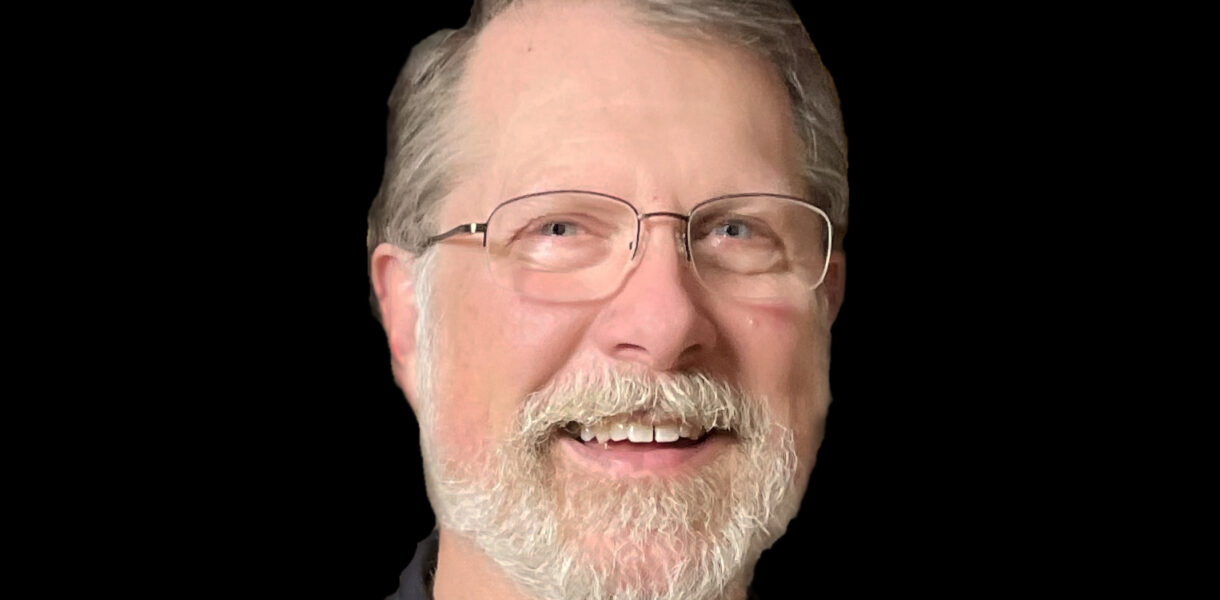Can you elaborate on specific instances where your experience as a church planter and revitalizer has made a significant impact, and how has it shaped your approach to training pastors and church leaders?
In 1986, when I began my journey in church planting in Dothan, Alabama, my primary focus was on evangelism. This task involved a hands-on approach, where I engaged with the community door-to-door, conducting surveys about their expectations and needs from a church. During these interactions, I would introduce a pivotal question, a hallmark of our church’s evangelistic approach since the 60s, 70s, and 80s: “If you died tonight, do you know for sure you’d go to heaven?”
Back then, evangelism mostly revolved around reinforcing beliefs that were already commonly held. However, the cultural landscape has shifted significantly since then. The assumptions we once relied on are no longer applicable in today’s context. Contemporary evangelism demands a focus on building genuine relationships, demonstrating our faith not only through words but also through actions.
Keeping the Great Commission now necessitates spending time with individuals who are not regular churchgoers. A significant challenge I’ve observed among many church leaders is their limited interaction with non-believers. This aspect is crucial in my work as a church planter and revitalizer – it forms the core of the training I provide to church leaders and pastors who are dedicated to engaging with the ‘Nones,’ the ‘Dones,’ and the ‘Uhms’ in their communities.
In essence, the growth of a church and the nurturing of disciples cannot be confined to the administrative tasks within an office. It requires active engagement in the community, fostering connections that transcend the boundaries of the church. To put it plainly, you can’t grow your church from your office! Honestly, that’s the foundation of how I train pastors and church leaders today. I help them get out of their offices and find effective ways to connect with the ‘Nones,’ the ‘Dones,’ and the ‘Uhms.’
Your passion is to help pastors become the Church Growth Catalyst for their congregations. Could you share some key strategies or principles you advocate to achieve this transformative role, and how they contribute to the overall success of a church?
I often find myself reminding the pastors I mentor that sparking growth in their congregations is more of a marathon than a sprint. Let’s break it down a bit, especially for those who might’ve snoozed through high school chemistry. A catalyst, in simple terms, is something that triggers a reaction without being changed itself. When you take the catalyst out, the reaction fizzles out. Now, imagine a pastor as this catalyst for church growth. They’re not just preaching about making disciples; they’re living it, setting the pace.
When a pastor embodies this role, they become a church growth catalyst, and that’s when the magic starts. The church begins to grow, and this growth sets off a domino effect. Anyone in ministry for a while knows this: new folks coming back are your top evangelists. They’re fresh on the journey, with a whole new circle to invite.
As long as the pastor keeps up with the church growth strategies we teach, this chain reaction keeps building. More first-timers show up, more returning guests come back, and the church members, they get into the groove, welcoming these new faces. This creates a buzz … it builds excitement that leads to exponential growth.
But here’s the catch – it’s like chemistry. If the pastor shifts back to just tending to the flock, focusing solely on member-care and losing sight of the church’s mission to make disciples, the momentum drops. Before you know it, the church hits a plateau and begins a slow and steady decline.
My role with the pastors in my Growing Church Network? It’s all about training them, empowering them, and keeping them laser-focused as their congregation’s church growth catalysts. When they stick to this path, their churches don’t just grow; they thrive.
As the Managing Partner of The Effective Church Group, how do you navigate the challenges faced by churches seeking consultation services? Can you provide examples of successful interventions that have led to substantial growth and revitalization?
Every church across North America has its own unique flavor, yet in many ways, they share common threads. From standing up for the opening and closing hymns to weaving sermons and prayers into the service, there’s a rhythm we all know. But let’s not forget, churches are filled with people, and where there are people, you’ll find a kaleidoscope of visions and missions vying for attention.
Now, factor in the distinct vibe of each community, peppered with diverse demographic groups, and the task of tailoring a church to effectively serve its community becomes a complex puzzle. When we roll up our sleeves for an on-site consultation at The Effective Church Group, our mission is crystal clear: we dive deep to understand the heartbeat of both the church and its community. We’re on a quest to uncover the congregation’s strengths, opportunities, and the core vision simmering beneath the surface.
Armed with this insight, we start building bridges. These aren’t just any bridges; they’re pathways that encourage church members and staff to engage with the community and, just as importantly, create welcoming entry points for the community into the church. When a church nails this environment and we align the dots between Christianity, faith, Jesus Christ, and those who are seeking or have drifted away, that’s when you witness a real turnaround.
Since 1984, we’ve been in the business of helping churches find their groove. I wish I could say every church we touch transforms into a beacon of growth, relevance, and sustainability, but the truth is, change is tough. What rocked in the 50s, 60s, or even the pre-COVID era of 2018 doesn’t always cut it today. Sometimes, old methods build walls instead of bridges.
When a church digs its heels in, resistant to change, decline is the inevitable outcome. But for those willing to embrace the necessary shifts, the results can be astounding. Take Maywood Baptist in Independence, Missouri – stuck on a plateau, unable to grow. We partnered with them, and not only did they double in size from 300 to over 600 in just a year, but they also navigated a smooth leadership transition as their lead pastor retired.
Or consider Saint John’s in Columbus, Ohio. Teetering on the brink of bankruptcy, our consultation helped them morph from a struggling downtown church into a thriving, debt-free community. These transformations aren’t a walk in the park, but when a church is ready to do what it takes to reach out for Jesus Christ, we’re there to guide them through these transitions toward effective, faithful, and sustainable growth.
With over 20 years of training pastors and creating various educational resources, what do you consider the most pressing issues in contemporary ministry leadership? How do your teachings address these challenges?
One of the biggest hurdles I see in modern ministry leadership is a fundamental misunderstanding of what being a lead pastor really means. Most seminaries are churning out pastors who are theological thinkers and caretakers of membership, but they’re often not equipped with the skills needed for effective church leadership. Sure, seminaries aim to produce theologically sound pastors, and they do a great job at creating scholars, but that doesn’t necessarily translate into effective leaders. And let’s face it, in today’s world, our churches are in dire need of leaders, not just pastors.
I know I ruffle feathers when I say this, but considering the steep decline of many U.S. churches, I stand by it. If we really dig into the Bible’s job description for lead pastors, we don’t find an emphasis on deep theological preaching, member care, administration, hospital visits, or managing bulletins and social media (not that the early church had any of that!). Instead, the scriptural mandate for a lead pastor is to equip the congregation to carry out the church’s ministry (Ephesians 4:11–13).
Take the scenario in Acts 6, for example. When the church members approached the pastoral staff about a problem with the food pantry, the pastors didn’t just take over the task. They demonstrated true leadership by refusing to let the congregation offload the responsibility onto them. Instead, they guided the members to solve the issue themselves by raising up spiritually mature lay leaders. The implication? The pastors needed to focus on training the church and reaching out to the community to make new disciples. They refused to allow the membership to displace the mandated mission to make disciples.
Then there’s the issue I call “playing Pastor Fetch.” This happens when a congregation treats their pastor more like an employee than the God-ordained leader of the church. That catch-all phrase in job descriptions, “and other duties as assigned,” leads to pastors being bogged down with tasks like bulletin creation, newsletter proofing, website updates, and maintaining office hours. (In my view, keeping office hours is a waste of time – you make an appointment to see a hair stylist, so why not for your pastor?) This overload prevents pastors from doing what’s necessary to grow the church and become the congregation’s growth catalyst.
When a pastor is trapped in this cycle, church growth becomes an uphill battle. For instance, the pastor is the congregation’s face in the community. When city officials or community members want to talk to someone from the church, they expect the pastor, not the board chair or a church member. But if the pastor is stuck inside the church walls, then to the outside world, the church is just a cold, austere building for most of the week.
In our work with churches and pastors, we focus on guiding them toward the biblical model of church leadership. Transitioning from a pastoral care chaplain to a congregational leader is no overnight feat. But with the right strategies and incremental changes, the pastors and congregations we assist can navigate these changes successfully, leading to growing, vibrant churches.
Your diverse roles, including authoring books, teaching at Phillip’s Seminary, and publishing Net Results magazine, showcase a multifaceted engagement with church growth. How do these different avenues complement each other in achieving your overarching goal of fostering church vitality and evangelism?
Navigating the shift from old church growth methods to what’s effective today is a real challenge, mainly because of the overwhelming noise and distractions out there. We’re bombarded with gimmicks and flashy trends that can sidetrack pastors and congregations from the true essence of church growth. The core of making disciples, a practice as old as Jesus’ time, hasn’t changed – it’s all about building relationships.
Gone are the days when a church could simply hang a sign saying “Everyone Welcome, Y’all Come” and expect the pews to fill up. The harsh truth is, last weekend, pretty much everyone who wanted to attend church was in church. In other words, the church’s target audience is those who didn’t want to go to church. We’re essentially offering a product that, at first glance, nobody wants. And let’s face it, the church in North America doesn’t exactly have an unblemished reputation. Some of this is earned, some of it comes from general skepticism towards religion, and sometimes, specifically towards Christianity.
The only way to break through this barrier and effectively reach our unchurched and skeptical neighbors is by building genuine, authentic relationships. At The Effective Church Group, our mission is to steer churches away from relying on gimmicks and to encourage them to get out of their offices and step away from their meetings. We want them to truly know their neighbors, and in turn, be known by them. This is how we live out 1 Peter 3:15 – “Be ready to share your hope when people ask.” But our neighbors will only ask about our faith, our hope, and our relationship with Jesus when they know us well enough to see the impact of our faith in our everyday lives. In other words, when we have a genuine, authentic relationship with our unchurched and unbelieving neighbors.
This approach to church growth is different from what many organizations advocate. But in our experience, building relationships with our neighbors is the most effective way to make disciples in today’s culture. Our message isn’t unpopular; when shared, it resonates with many. The challenge is that it often gets lost in the cacophony of gimmicks, gadgets, and overwhelming advertising.
That’s why I write books, teach at seminaries, publish Net Results magazine, create videos, and actively engage on social media. My singular goal is to help the church become effective in making disciples of Jesus Christ. This is what drives me, from the moment I wake up until late in the evening. It’s about igniting that spark of discipleship and keeping it burning brightly in today’s world.
Facebook: https://facebook.com/billtbhttps://facebook.com/effective.church.group
Twitter: https://twitter.com/billtb
LinkedIn: https://www.linkedin.com/in/billtb/
Instagram: https://www.instagram.com/billtennybrittian/




